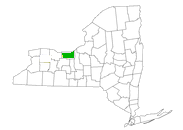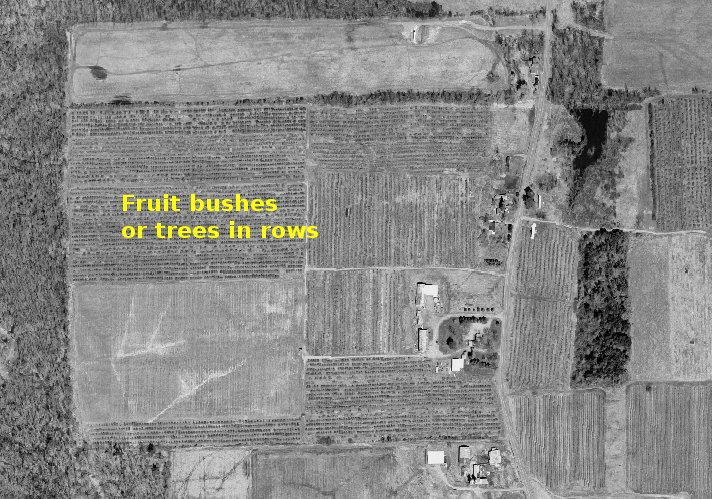Wayne County
PDF report: pesticides-wayne-2013

Entering Wayne
NYS DEC contracted with Cornell University to undertake a survey of selected representative areas in upstate New York to determine the occurrence of pesticide contamination of groundwater by sampling well systems in rural (domestic and farm) and suburban areas. Of particular interest are areas judged most vulnerable, where significant pesticide use (agricultural and otherwise) coincides with shallow aquifers, presenting elevated contamination risks in contrast to areas with low pesticide use and/or less vulnerable groundwater resources. Intensity of pesticide use, reliance on ground water, and aquifer characteristics made Wayne County a priority candidate for sampling, as identified by statewide selection protocols developed and refined in prior years. As in prior counties sampled, the primary cooperator was the Wayne County Soil & Water Conservation District (WCSWCD).
Well selection was primarily based on local knowledge of groundwater conditions and vulnerabilities, onsite and aerial image assessment, and the PSUR pesticide database. Cornell personnel proposed 95 potential sampling sites based on aerial land use and topographic assessments; as sampling progressed another ten sites were identified by the WCSWCD, which carried out sampling visits in December 2009 and January 2010. The NYS DEC laboratory conducted broad multicompound analyses for pesticides and degradation products. ELISA atrazine assays as well as nitrate assays were carried out by Cornell personnel.
The extensive agriculture in Wayne County is reflected in the fact that agriculture was the primary land use category for 37 wells. Of these, there were 21 wells for which orchards was the primary land use, and another 12 for which grain cash crops or corn/forage rotation were the primary land uses. Forage and muck soils were the primary land uses for a total of 4 wells. Woods or scrub regrowth was the primary land use around 4 wells. The most prevalent secondary (20 wells) and tertiary (17 wells) land use was woods or scrub. Agriculture was the second most common secondary (17 wells) and tertiary (11 wells) land use. Suburban areas in the county are primarily served by public water supplies, which resulted in little representation of those land uses in the sampled well array (2 wells). Of the 34 wells for which the depths were known by landowners, two thirds were either shallow (up to 30 ft.) or moderately shallow (31-60 ft. deep).
Change in analytical setup at NYSDEC lab
Starting with the 2009 Wayne County sampling, we revised the analyte list at the NYSDEC lab to reflect cumulative experience and improvements in analytical technology. We eliminated several active ingredients and added some herbicide degradation products. For most active ingredients we improved the minimum detection limit from the earlier 1 µg/L to 0.1 µg/L. We had long been detecting herbicides in the range 0.05-0.50 µg/L range using ELISA at Cornell, without the corroboration of NYSDEC’s expert lab with its higher 1.0 detection limit.
Results
NYSDEC pesticide scans found that most analytes were below the improved detection limits. The only analytes detected by NYSDEC were degradation products of metolachlor (ESA, OA) at five sites and alachlor ESA (at one of those five sites). Of these, the only levels substantially greater than detection limits were 4.4 to 4.6 µg/L of two metolachlor metabolites at one well, and 1.9 µg/L of metolachlor ESA at another. An ELISA scan for atrazine conducted at Cornell University indicated two nonquantifiable trace detections (under 0.1 µg/L) at sites where metolachlor degradation products were found. These findings established that the 41 well samples from Wayne County did not exceed any ambient pesticide groundwater standards or guidance values. The detections of metolachlor OA and ESA degradation products (4.4 to 4.6 µg/L) have no standard or guidance value against which to compare, although both were lower than the metolachlor standard of 9 µg/L. Similarly, the detection of alachlor ESA (0.1 µg/L) has no standard for comparison. Trace detections of atrazine from tests performed at Cornell were below 0.1 µg/L, well below the 3 µg/L standard.
Of nine wells where corn/grain cash crops was the primary land use, four had pesticide detections and one also had elevated nitrate. Of two muck soil primary land uses, one had pesticide detections (also noting that cash crops was a prominent secondary land use). Of 21 sites with orchards as primary land use, none had pesticide detections, and one had elevated nitrates (and said site again had cash crop corn as the secondary land use). Of the land uses tested, clearly corn/grain cash cropping was the most likely to be associated with detections which consisted of herbicides or their degradation products.
As we have observed in prior counties, not all shallow wells tested had problems, but all detections were clearly associated with shallow wells in close proximity to agricultural land uses.
Later resampling
Wayne County wells had been sampled originally in 2009 and a few were resampled seasonally in 2015-2016. The most notable findings were metabolites of Metolachlor in the majority of resampled wells. Besides the usual atrazine and metolachlor findings, there were low level flickers of several pesticide active ingredients not found in our samples from any other county, including Simazine, Carbofuran, MCPP, and 2,4-D. Diazinon was found in Wayne and in one original-round Orange County sample (the latter only via ELISA).
Fully detailed resampling results, with the original results from the same wells, are included in a file:
- PDF resampling report: pesticides-resampling-detections
Wayne was the last whole county covered by Cornell sampling for NYSDEC pesticide purposes. None of the roughly 240 wells across six counties , none showing any drinking water issues, were enough for this type of work. We next did a karst-focused project.

Wayne County Sodus bay area
Last updated 2023-09-21 sp17 AT Cornell.edu.